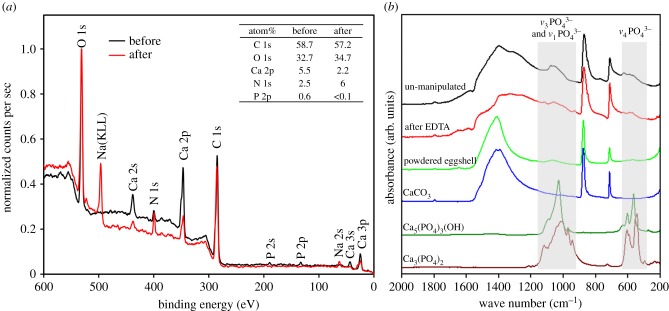Figure 6.
(a) XPS spectra for a N. perdicaria egg before and after treatment with EDTA to remove the cuticle. Table shows atom percentages for different chemical elements present on the surface of the eggshell. N and Na following treatment with EDTA may be attributed to the residual presence of EDTA. (b) FT-IR spectra for a N. perdicaria egg before and after treatment with EDTA to remove the cuticle, and after being ground down into a powder. Spectra for calcite [CaCO3], hydroxyapatite [Ca5(PO4)3(OH)] and tricalcium phosphate [Ca3(PO4)2] are also illustrated. The absorption between 1200 and 950 cm−1 is characteristic for P–O stretching modes (ν3 and ν1) of PO43– and the absorption between 650 and 550 cm−1 is due to the triply degenerate O–P–O bending mode (ν4) of PO43−. The FT-IR spectrum of the powdered tinamou eggshell was dominated by signals due to calcite, confirming that the calcium phosphate species were predominantly localized on the surface. (Online version in colour.)

